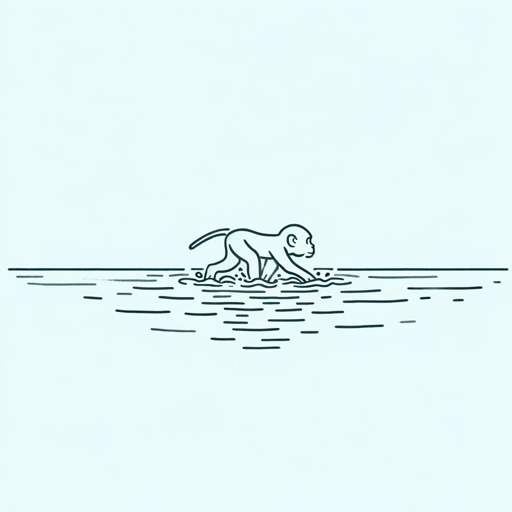19 pages • 38 minutes read
Thomas LuxTo Help the Monkey Cross the River
Fiction | Poem | Adult | Published in 2004A modern alternative to SparkNotes and CliffsNotes, SuperSummary offers high-quality Study Guides with detailed chapter summaries and analysis of major themes, characters, and more.
Background
Literary Context
The poem is informed by 20th-century literary and artistic movements such as surrealism, neo-surrealism, and absurdism, but cannot simply be called a surrealistic work. Lux uses surrealist and absurdist imagery and techniques as a starting point to express his vision, but unlike some surrealist works, the poem does not follow a stream-of-consciousness or arbitrary style of imagery depiction. “To Help the Monkey Cross the River” contains contradictory images and absurd questions, but those are very deliberately planted by the poet.
The allegory is the closest literary form the poem emulates. Lux termed the entire poem a giant metaphor; the initial image of a monkey swimming across a river is a metaphor for a small, helpless creature buffeted by life’s larger forces. The force could be nature or human institution, but the creature is at its mercy. The poem’s speaker wants to somehow intervene in the creature’s predicament, but they are unsure about their own motive for doing so. In this sense, the poem has strains of absurdism and existentialism, movements in which existence is futile, and absent a benevolent god.
Lux’s work is highly contemporary in form, and he eschews even the use of stanza breaks in “To Help the Monkey Cross the River.

